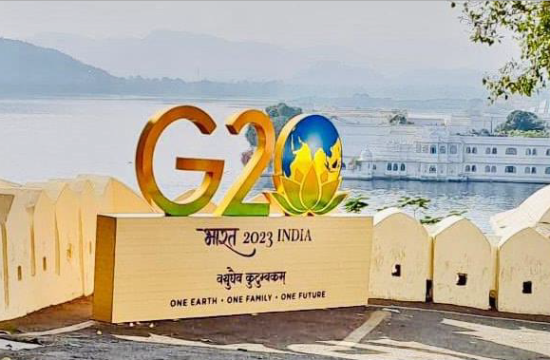Economists sometimes joke that ‘if a man marries his maid, the GDP declines’. This is because household work is not counted in GDP, while the same work outside the house is. As amusingly as it may seem, it says a lot about our society.
Throughout our history, in many cultures, women have been exploited, had their sexuality controlled and were deemed to be the property of men. Labelled as the weaker sex, they endured the brutality of social norms. This status quo was challenged by women’s rights activists in the 19th century. In France, the USA, and Britain, they focused on getting women’s legal rights, especially the right to vote. In India, the situation of women was more dire. Here the fight was for dignity (Keralite rulers’ tax on women’s upper attire) and survival. Leaders of the Bengal Renaissance lobbied to ban female infanticide, child marriage and sati. Raja Ram Mohan Roy went as far as to form vigilante groups to visit Kolkata’s cremation grounds and save widows from being burnt alive.
These efforts, collectively known as the feminist movement, achieved much in a short period of time. In the early 20th century, many countries around the globe, including the British Raj, started allowing (limited) women’s suffrage. World War II provided women with an unprecedented opportunity to move into occupations previously exclusive to men, thus overcoming gender stereotypes. Meanwhile, the women’s movement in India, spearheaded by leaders like Sarojini Naidu and Gandhi, unfolded alongside the nationalist movement. Mass participation in the freedom struggle was a major liberating experience for otherwise home-centred Indian women. After independence, the Indian Constitution and several other commonwealth nations not only promised equality to women, but also empowered the State to adopt positive discrimination in favour of women. Feminism proved to be a galvanizing force and uplifted the status of women globally.
Demise of Feminism
But the past three decades have witnessed the rise of a concerning phenomenon — a misguided popular opinion that women have been sufficiently empowered. Termed post-feminism, this is a belief that feminism has achieved all its goals and is no longer needed.
This not only undermines the achievements of feminism but also carries dire social consequences for women. India has one of the fastest-growing economies in the world. Throughout the 1990s and particularly in the early 2000s, women’s participation in the workforce grew. But then it mysteriously declined, despite the fact that our population boomed, and we became one of the fastest-growing economies. According to the World Bank, Indian female participation in the labour force, which was 31 per cent in 2000, hit rock bottom at 26 per cent in 2020. We hypothesise post-feminism to a factor behind this. Women who take career breaks for maternity and elderly care, and childcare are constructed as their choices more than norms prescribed by society, which still battles for paternal leave in courts!
Data from the National Family Health Survey also paints a grim picture. In our country, only 25.4 per cent of women who work are paid — a stark reminder that Indian women are far from achieving economic autonomy and their labour is not recognized. They work, in family farms and family-owned businesses, but are not salaried. Access to a smartphone, which is linked to enhanced contraceptive use and easier access to financial services, is also low for women. No more than half the women in Hindi-speaking states have smartphones. Even developed countries, like the United States, have failed miserably to provide sound reproductive rights and workplace equality to women, where we could not trace a female president down the history.
Women who are employed in rural India, victims nor torch bearers of the ‘feminisation of agriculture,’ working on the fields often owned by their male counterparts, as men have to migrate to earn more and better, since agriculture is a seasonal occupation and factors like erratic rainfall, poses threat over income stability. This is a stark criticism of the post-feminist construct — women being employed do not work on their choice but are left with or dictated by social construct (gender norms: “obey one’s husband and support his endeavours”). This is an instance of uncomfortable fact stating women employed is equivalent to women empowered by post-feminists!
Pop Culture and Male Gaze
Today, the term ‘feminism’ itself has been hijacked. It happens to be one of the most misunderstood words and feminists are often painted as misandrist (man-haters). Nothing could be further from the truth. Feminism always has stood for the equality of both genders and not for female superiority. It is inclusive, not hegemonistic.
Subtle denunciations of feminism exist in our popular culture. Movies like ‘Arjun Reddy’ and ‘Animal’ normalize — and sometimes even glorify — misogyny. They personify abuse as love language. And the submission of women is shown to be out of her love unveiled under the assertion of wifehood, to submit and devote oneself to one’s man. For a country that registers 51 FIRs every hour for crimes against women, do we have enough matured audiences for such films? Our movies also objectify women in every possible way — from unrealistic beauty standards to over-sexualized outfits. They dehumanize women by narrowing down their beauty to tall, fair, and skinny. We are witness to a hyper-culture of commercial sexuality. A culture where a woman’s worth is dependent on her sexuality.
Post-feminist narration is focused on the individual as against collective empowerment envisioned by feminist scholars and movements. Just like the narration that the middle class are the biggest traitors of the Industrial Revolution; they are resisting to come out of their cosy life by citing EMIs and bills to be paid, worried about repercussions they might face because of mass agitation. Similarly, post-feminists prevent mass movement of folks for women, by emphasizing, “individuality, she is a product of her choice, sexuality can be used as a weapon to enslave male counterparts.” Thus, preventing the holistic vision of women’s empowerment and parameters constructed. The freedom to dress, work and look after the family, glorifies motherhood — a misconception to emphasize ideal womanliness that is dictated in the guise of women empowerment!
It is time to brace up and act rationally. Since Feminism, women may have been awarded suffrage, but still, she must pack her child’s lunchbox. Glorifying women as goddesses and an embodiment of chastity, biological, psychological makeup of genders is different from embracing those diversities, spreading love and humanity. In this era of the Holocene epoch to the Anthropocene where nature is womanised and expected to be submissive and tolerant, it has a threshold which is sooner to be exploded. That would be Shiv Tandav or Vishnu Chakra or judgement day to be continued in the next article 🙂
-Varsha U & Devashish Khanayat (Batch 2025)











